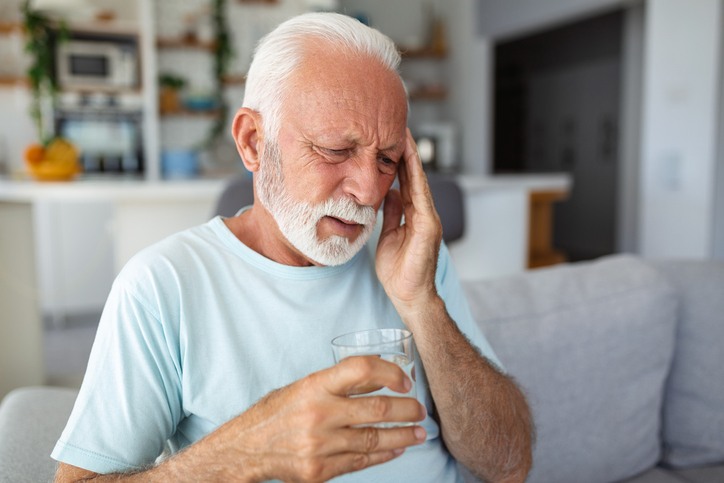
Here are the top stories covered by DocWire News this week in the Rheumatology section. In this edition, read about the impact of mindfulness on fibromyalgia, whether osteoporosis patients should consider taking a “drug holiday,” how social stress—and support—impact women’s bone health, and the difficulties of finding primary care among opioid users.
Fibromyalgia patients may benefit from higher mindfulness, according to a new cross-sectional analysis. The researchers used baseline data from a clinical trial on fibromyalgia. The Five Facet Mindfulness Questionnaire (FFMQ) was used to evaluate patients’ mindfulness, and regression models were used to evaluate associations between mindfulness and fibromyalgia impact, pain interference, physical function, depression, anxiety, stress, self-efficacy, health-related quality of life, and psychological outcomes. FFMQ and Revised Fibromyalgia Impact Questionnaire scores were 131.3 ± 20.7 and 57.0 ± 19.4, respectively. The researchers observed a relationship between higher mindfulness and lower fibromyalgia impact (r = − 0.25), pain interference (r = − 0.31), stress (r = − 0.56), anxiety (r = − 0.58), depression (r = − 0.54), and better mental health-related quality of life (r = 0.57).
A systematic review published in Osteoporosis International evaluated whether osteoporosis patients at a high risk for fracture could benefit from a “drug holiday,” or taking an extended break from treatment with bisphosphonates (BiP) or denosumab. The authors found that outcomes differed based on varying therapies. Patients who discontinued BiP had an increased new clinical fracture risk of between 20% and 40%, according to prospective and retrospective analyses; vertebral fracture risk was about twice as high. Stopping denosumab therapy was associated with rapid bone loss and a 5% incidence of multiple vertebral fractures. The literature did not point to an increased fracture risk associated with stopping treatment long-term, suggesting a low rate of adverse skeletal events. “Studies have not identified risk factors for fracture after stopping treatment other than those that provide an indication for treatment (e.g. prior fracture and low [bone mineral density]),” the researchers observed.
Postmenopausal women with high levels of social stress may be at risk for diminished bone mineral density (BMD), a new study has found. The authors evaluated the Women’s Health Initiative (WHI), which included 161,808 postmenopausal women (baseline age, 50–79 years) from 40 clinical centers across the United States between 1993 and 1998. The present study included about 7% of the original cohort. The final analysis included 8,271 women. Those with higher social strain tended to be younger, have a higher body mass index, and be a smoker, while women with lower levels of social strain were more likely to be educated and physically active. Compared to white and Asian women, black, Latina, and Native American women had a higher likelihood of social strain. Regarding bone-related changes, the researchers reported: “Participants reporting high social strain and low social functioning (ie, increased stress) had a significantly greater change in each BMD measurement compared with those reporting low stress (p<0.05).” Women with high levels of social strain and low social functioning were more likely to have declining BMD at all measured areas, the researchers further found, and those with low levels of social support had poorer BMD outcomes in the femoral neck and total hip compared to women with greater social support levels.
Primary care practices are more likely to turn away patients taking opioids for chronic pain, according to a new study. The researchers used a commercial database of office-based practitioners to randomly select 667 primary care clinics located in Michigan, which were stratified by practice size (1–3 or > 3 practitioners). Clinics were contacted via telephone. Of the 667 clinics selected, 219 were eligible for inclusion, and 194 completed the phone call; 94 clinics were called with research assistants posing as Medicaid patients, and 100 as Blue Cross Blue Shield patients. “Of these clinics, 79 (40.7%) stated that their practitioners were not willing to provide care for new patients taking opioids. A total of 81 clinics (41.8%) were willing to schedule an initial appointment,” the researchers found. “An additional 33 clinics (17.0%) requested more information before making a decision. After receiving this information, 1 clinic accepted the patient, 4 did not accept the patient, 20 stated that the practitioner would decide about opioid prescribing after the first visit, 7 stated that they would refer the patient to a pain clinic, and 1 requested faxed medical records.”







 © 2025 Mashup Media, LLC, a Formedics Property. All Rights Reserved.
© 2025 Mashup Media, LLC, a Formedics Property. All Rights Reserved.